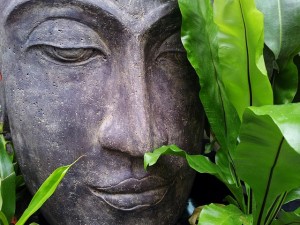This post has already been read 1852 times!

Dr Hens Salye, considered the father of stress awareness defined stress as the rate of wear and tear within the body. He identified two types of stress; Eustress (positive or healthy stress and Distress (negative stress).
Generally speaking, stress can be caused by our need to adapt physically, mentally and emotionally to a change. Media articles often talk about stress and the need to manage stress. The remedies suggested implicitly and often explicitly give stress a negative connotation.
Changing economic times also put a strain on an individual’s stress tolerance and resilience. Very often the pressures and demands between work and personal life become blurred. Stress in one area of our life spills into the other.
However, not all stress is negative. At times stress can also be positive and healthy.
The ideal situation is to have a healthy level of stress with which we can cope, and which does not affect our normal activities and functions. Healthy stress means a healthy person. It’s all about stress management.
3 Fundamental Requirements to manage Stress
Firstly, understand what triggers your stress mechanism. This means an honest introspection into the circumstances around you, understanding your personal trigger mechanism and your reactions. This understanding enables you to mitigate the situations that create unhealthy stress by using the most appropriate stress management tools.
Secondly, accept that stress is a part of modern life. We may not have control over our daily stressors but we do have control and choice over how we wish to respond.
One useful tool for this is the SWOT analysis
Here you look at yourself and the environment.
Think about yourself, and list what Strengths and Weaknesses you possess. Use your strengths to overcome situations and lessen the impact of your weaknesses. These are your internal factors over which you have control.
Think about your Opportunities and Threats and list them. These are external factors over which you may or may not have control. Where you have control, action it, where you don’t, think of ways to mitigate any harm to the health of your mind and body.
Consider confronting the major stress triggers in your life. Remind yourself that you and your Higher Self are stronger than any external problem stimuli. Then take action to reduce the impact of the stress trigger in your life.
Once aware of the actual stressors we come to the third requirement – the coping skills required. No two people are the same and what works for one may not be as effective for another.
Essential coping skills include healthy diet, adequate rest, time management, assertiveness training and an effective support system of family and friends. Another popular method is energy management.
Yoga provides us with many coping skills for Stress Management
In Stress Management with Chakra Balancing Exercises, I share different exercises to balance the chakras and manage stress.
In this post, the focus is on using meditation as a tool for stress management.
Meditation can have different meanings for different people depending upon their level of exposure to it and their spiritual development.
For some it is a method for relaxation to release their daily stress. For others it is a tool of yoga for enlightenment or a ritual of concentration to raise their awareness.
In fact, we all meditate at some point without even realizing it.
For example, when working on a time bound deadline, our focus is single-minded aimed at achieving the successful completion of the assignment.
An artist who completes a painting is also meditating in bringing their imagination, feelings and emotions onto a canvas with colours.
There are many types of meditation and there is no hard and fast rule as to the one that you can use.
It comes down to choosing which technique works best for you.
One can meditate without seed thought or engage in abstraction meditation where the goal is to go beyond the mind achieving a peaceful expanded state of consciousness.
It is useful for very busy people and involves the use of special breathing techniques and sometimes chanting of specific words or mantras. Used for 5 to 15 minutes it can transform the agitated person to a state of calmness.
In yoga, deepening concentration leads to meditation; when you reach a state of pure consciousness while still retaining your awareness of separation.
This is what happens during transcendental meditation as well. Meditation is the seventh limb of Yoga where in the mind and body are transcended and total unity exists.
While meditating on an object, be it a candle flame, mantra or even a statue, we repeatedly bring our mind back to the object of our concentration.
The mind will wander in the beginning but with practice, you will learn to bring your thoughts under control. As a result, you will also notice that your ability to concentrate improves in real life.
Through this concentration, you remove the external environment and concentrating on one small object, are able to realize your true self.
Practiced regularly, meditation helps you to discover a sense of purpose and strength, making your thinking clearer. It’s not surprising if you suddenly find some of your stressors disappearing. Small inconsequential matters are perceived as such and they lose their control over you, especially your mind.
There are 2 easy techniques for yogic meditation which can be easily used in daily life.
Vipasyana Dhyana or Breathing Meditation
This technique is well known in yoga and Buddhism and requires concentrating the mind on the act of breathing without trying to influence it.
To relax the mind, breathe normally and steadily through your nose. Ensure that your head, neck and trunk are in alignment. Be in a meditative state, and with eyes closed, focus the mind on the breathing.
Once comfortable with this breathing, imagine with each inhalation that your body is filling up with divine energy or that the air is pure white and clean.
With each exhalation, imagine that you are breathing out all the impurities, negative feelings, your weaknesses and stressors. Imagine that these shortcomings are being eliminated from your body when you exhale in the form of black air. Visualize that your body is becoming alive and radiant through this process.
This meditation can be done in the garden surrounded by nature or even in the comfort of your own home. Light candles or incense to create an ambiance to further the visualization used in the breathing technique.
You can also practice alternate nostril breathing or Pranayama using the same visualization technique.
Eyes closed, with posture as described above, use your right thumb to close the right nostril and your right ring finger on the left nostril to open or close the nostrils. Close the right nostril and exhale to empty your lungs and then inhale deeply to the count of 4.
Close both nostrils and hold till a count of 8 and then keeping the left nostril closed, exhale from the right nostril. Now inhale through the right nostril and exhale from the left using this technique.
One inhalation and one exhalation comprise a cycle and to get maximum benefit at least 15 cycles should be completed.
Caution: Don’t use this method if you have breathing problems. Instead do alternate nostril breathing without holding your breath.
Candle gazing meditation
This type of meditation is quite easy.
It is better suited for those of us who find it hard to concentrate on a mantra or image as one can hold onto an after image of a bright flame with closed eyes.
Place the candle at eye level at a distance of one meter in a dark and draught free room. Sit in a meditative posture with crossed legs with an erect spine. Keeping the eyes wide open and without blinking, gaze at the candle flame until the eyes become watery or tired.
When the eyes are tired, gently close them keeping your inner gaze steady, visualize the object and meditate on it. Once the image vanishes, open the eyes and repeat the candle gazing.
Please note that it is important that the eyes should be relaxed. No force should be applied otherwise a headache is possible. With practice, you’ll learn to ignore the irritation and watering of the eyes. Your gaze will become steady making the mind single pointed.
It is advisable to start this process slowly with say, 10 to 15 seconds at a stretch and with 3 repetitions at a sitting. As time progresses, the duration can be gradually increased by 10 seconds per week.
One method of deepening this form of meditation is to visualize that you are breathing in and out the candlelight.
Feel a sense of purity and clarity infusing your mind and body and eliminating the stress that you have holed up inside yourself. Remaining still and focusing only on the candle flame stills your mind and with single pointed concentration you enter deep relaxing meditation.
At the completion of the candle meditation, close your eyes and lie down for a few minutes to allow yourself to return to normal.
Try out one or both of the methods to see which one works best for you. At the end of the day, meditation enhances your sense of well-being and ability to cope with the stresses and strains of daily life.
Now over to you! Which is your favorite tool for stress management?
Severe stress can lead to burnout which is more serious.
Want to try Karmic Ally Coaching’s Burnout Self-Test? Click on the ebook image below and take it from there. Did I tell you it’s on the house?




 I adhere to the Certified Coaches Alliance Code of Ethics and Standards. A copy is available on request.
I adhere to the Certified Coaches Alliance Code of Ethics and Standards. A copy is available on request.
 Let's Talk through the Connect Form:
Let's Talk through the Connect Form: